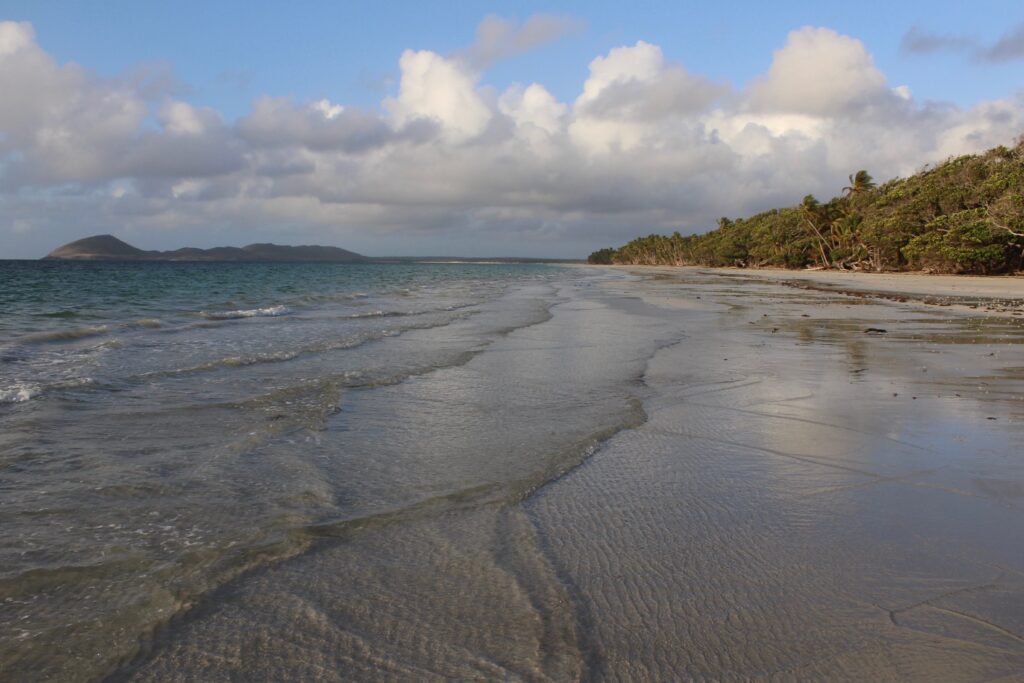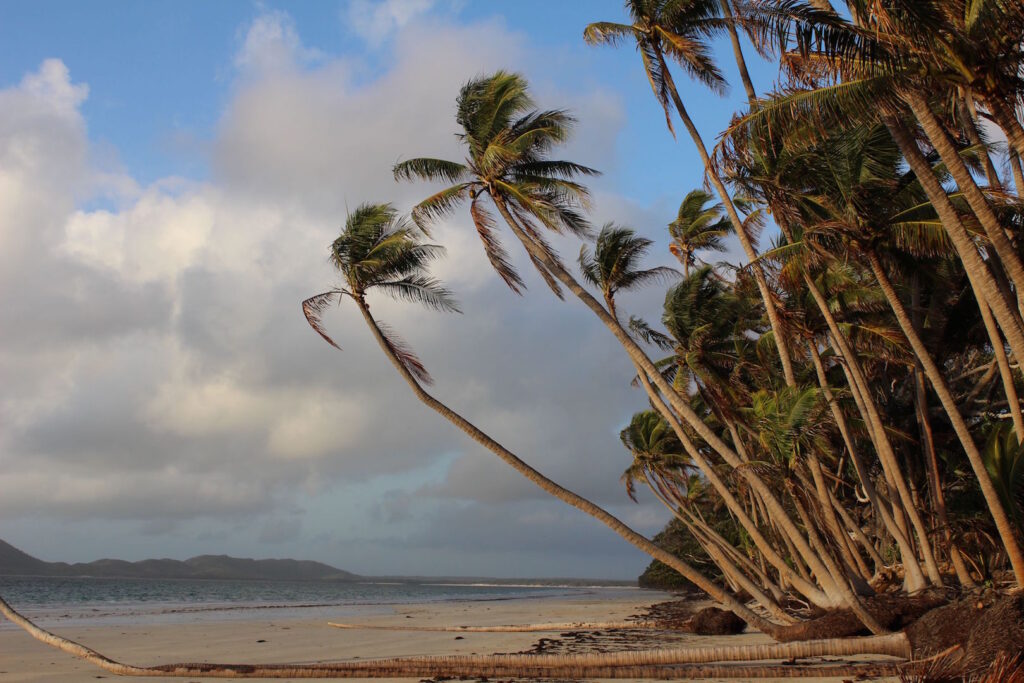
Strolling in the peachy glow of an east coast dusk, along the rippled sand at low tide’s edge on Chilli Beach, FNQ, you’re stopped, jaw-dropped, by a display of aeronautical lyricism. Flocks of small birds – metallic starlings – swoop in curves overhead, converging, growing in number as they gather and join other flocks, and all turning in sync. In a fluid dance, they skim past the top of the water, the flock circling as one entity above you before disappearing on a small islet close to shore. As one flock alights on the low rocks, another gathers in the rainforest to the west and performs their own air poetry overhead, out to sea, and then down to roost.
It’s a murmuration, and it happens every evening during the warmer months (September to April). Standing on the beach, it is almost impossible to film, as it happens in 3-D with you transfixed in the centre of the show. It is breathtaking.
Chilli Beach is a postcard. Just beyond the high tide mark, behind the tall coconut palms, is a tangle of green: leaves, vines, dense thickets of young coconuts. The sea here is varied shades of dreamy tropical aqua. The sand is fine and pale. To the south, a headland, to the north, another. Islands scattered out in the ocean. Shorebirds everywhere: gulls, oyster catchers, herons. If you’re lucky, you’ll spot palm cockatoos.

Some destinations take a little more effort to reach; you’re amply rewarded for this effort. There are no hotels or airbnbs here in the Kutini Payamu (Iron Range) National Park, some 775km north of Cairns. No shops, no drinkable water – no facilities but a couple of composting toilets. About four hours drive from the Archer River roadhouse on the Peninsula Development Road via Portland Roads Road, you’ll need a 4WD and to be a self-sufficient camper to visit. The drive becomes increasingly beautiful as you approach Chilli: Kutini Payamu, the largest remaining area of low-lying rainforest in Australia, is significant habitat for a number of species, including the gorgeous green python, and is a noteworthy site for birdwatchers.
Remote and exposed, Chilli Beach is subject to trade winds and ocean currents that deposit large amounts of marine debris. Along the high tide mark, you may find a lot of plastic debris amongst the seaweed and pumice. Some visitors find this confronting. We suggest you do what we did: make yourselves useful and take a spare couple of garbage bags or boxes to fill on your beach stroll. You can drop them off at a dump just a few minutes up the Portland Roads road.
It’s a small price to pay for paradise.

Details
Book your campsite online before you go: phone coverage is limited north of Cooktown. https://parks.des.qld.gov.au/parks/kutini-payamu/camping/chilli-beach
The Lockhart River community lies not too far south, with a good supermarket for supplies. The famed Lockhart River Art Centre, started by the Lockhart River Art Gang in the 1990s, is definitely worth a visit. https://lockhartriverart.com.au/#section/home
Tangaroa Blue holds annual Chilli Beach cleanups, usually in August. https://www.tangaroablue.org/event/chilli-beach-clean-up-cape-york-qld-2/
Marine stingers are present during summer months, and remember this is croc country, so be croc-wise.
The road in may become impassable during the wet: check first.